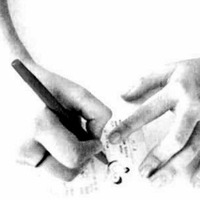fiorent fernisia
Universitas Pelita Harapan, Architecture, Faculty Member
INTRODUCTION In both architecture practise and academia, the choice of types of architectural drawing and how we present them is usually determined by how the method may effectively communicate our ideas to a specific type of audience in... more
INTRODUCTION In both architecture practise and academia, the choice of types of architectural drawing and how we present them is usually determined by how the method may effectively communicate our ideas to a specific type of audience in a particular spatial setting. The characteristic of one medium is cautiously chosen for the sake of clarity of information required by the circumstance in which we present the drawing. However, looking at architecture more substantially as knowledge about human relationship with space, as a representation, the types of drawing and the way we present them determine our depth of learning. 1 Drawing mediates our understanding of physical space. The act of representing allows us to separate our physical entity from the space inside the drawing so as to be able to see it more objectively. In this regard, what is often overlooked is that physical relationship, that is very much architectural, between the drawing itself and our own body. To build a thorough understanding, we need to learn architecture directly from its physical object and through not only its representation but also our embodied relationship with the medium. This research is an attempt to bridge the gap between the direct and the mediated architecture learning, that is by allowing drawing in its wholeness of physicality to not only to be used pragmatically but also performatively. This study aims to explore a new way to look at and use architectural representation, "How can architectural drawing generate an embodied-spatial relationship with its audiences and therefore perform the spatial idea being disseminated?" By borrowing a theory from narratology, we answer the question through a precedent study, as well as through two experiments that we conduct to try out this theory. In the end, we hope to elucidate the overlooked role of architecture drawing, namely its performance aspect.
Research Interests:
Abstrak Plastik merupakan material yang dapat membahayakan bumi jika terus-menerus hanya diproduksi untuk dipakai secara sementara. Di saat yang sama, usaha untuk mendaur ulang plastik hingga saat ini terbatas pada produk aksesoris dan... more
Abstrak Plastik merupakan material yang dapat membahayakan bumi jika terus-menerus hanya diproduksi untuk dipakai secara sementara. Di saat yang sama, usaha untuk mendaur ulang plastik hingga saat ini terbatas pada produk aksesoris dan produk rumah tangga, yang secara jumlah, permintaan kebutuhannya masih minim. Penelitian ini merupakan sebuah usaha untuk mengeksplorasi teknologi daur ulang plastik untuk menghasilkan material bangunan sehingga produksinya dapat digunakan untuk memenuhi kebutuhan yang jumlahnya lebih besar secara sekaligus. Melalui penelitian ini penulis bereksperimen dengan membuat dan menguji beberapa prototipe elemen bangunan (dinding dan partisi). Penelitian pertama-tama dilakukan melalui penjabaran landasan teori tentang teknologi material plastik dan penggunaannya sebagai bahan bangunan. Studi kasus yang diangkat secara khusus adalah praktik Precious Plastics sebagai wadah komunitas dan penyedia perangkat daur ulang plastik di seluruh dunia, serta secara umum, proyek-proyek arsitektur terbangun yang menggunakan plastik daur ulang. Dari tahap ini, muncul kesimpulan mengenai hambatan dan potensi kegiatan daur ulang plastik untuk pembuatan bahan bangunan. Simpulan ini digunakan untuk mengerucutkan batasan-batasan eksperimen yang dilakukan (dengan bekerjasama dengan Mortier ID). Eksperimen yang dilakukan menghasilkan beberapa prototipe elemen bangunan yang dapat menjadi pedoman dan landasan untuk eksperimen-eksperimen yang akan datang. Abstract Plastic is a material that can harm the earth if only continuously produced to be used temporarily. At the same time, attempts to recycle plastics have so far been limited to accessories and household products, which are in minimal demand. This research aims to explore plastic recycling technology to produce building materials so that production can be used to meet the needs of a larger number at a time. Through
Research Interests: Upcycling and Daur Ulang
Four years after its launching in 2012, Chris Ware’s Building stories receives two contradictory criticisms. One the one hand, critics emphasise the centrality of architecture in the comic, while on the other Ware himself negates the... more
Four years after its launching in 2012, Chris Ware’s Building stories receives two contradictory criticisms. One the one hand, critics emphasise the centrality of architecture in the comic, while on the other Ware himself negates the notion and instead posits ‘memory’ as the comic’s central. Using several theories gathered and constructed from narratology, comics studies, and visual culture, this research intends to elucidate the relationship between comics (as idea dissemination medium) and architectural experience (as architectural idea) to extricate this project’s contradictory criticisms. In the end, in the pursuit of extending preceding researches in this area, I argue for comics’ excellence in disseminating architectural experience.
